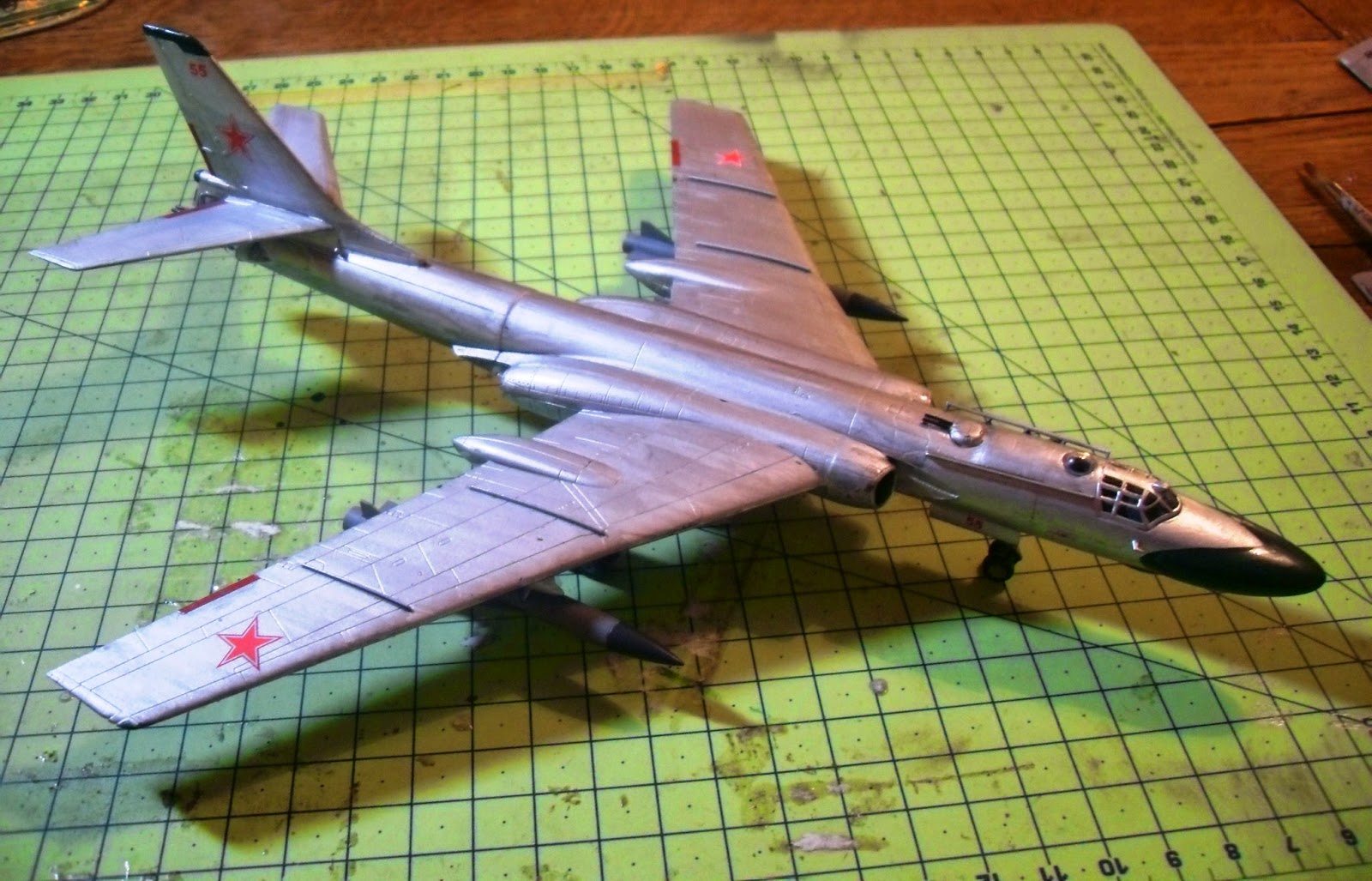Not only has work and life been stupidly obstructionist this past month, but when I found, at last, a moment to post on my feeble kit bashing efforts, I discovered that my work managed laptop, having been totally reconfigured, no longer liked to copy images from my portable device. What a lot of new words - laptop, portable device...blah, blah...all the jolly new words that have entered the English language in my recent-ish lifetime, just like Taliban, jihad, fatwa that sort of thing. It must have been a tad better in the past, when we picked up buckshee, char, chit-chat, bint, fella, kibosh, all useful, benign words. Anyway, enough of all that, time to see if I have cracked the newly reconfigured bloody hell machine:
It works! It works! As you can see, I've been having fun with the rather marvellous Cold War warrior, the 'Badger'. I was rather taken by an enthusiastic build by Karl Robinson in the February issue of Scale Aircraft Modelling (SAM), and got myself a 1:144 one by Trumpeter. After the awful time I had with the new Airfix Vampire (see passim) , which I hasten to add was all my own fault, I can report that the Badger was most enjoyable, and I think that I may have found a new enthusiasm - large-ish Cold War warriors in 1:144.
First up (below) was the cockpit, not much of which can be seen in the end. But, as you can see, I had a bit of trouble trying to get an approximation of the unique colour that the Soviets painted the cockpits of their aircraft.
Then, the weakest part of the whole thing:
Trumpeter produce different variants of the Badger, which probably dictated the fuselage construction, which in turn needed a fair amount of filler fore and aft. Mr. Robinson in his SAM build did a very good job at filling and sanding away the joins. Not so Mr Front:
Nonetheless, a rather pleasant kit bash. So much so that I've ordered another, and stocked up on Humbrol metalcote, which is good to work with, especially for an old brushist like myself.
While I was slowly bashing this kit over the past month, the whole Ukraine/EU/Russia/Crimea/Putin business was playing itself out. I was, I must admit, a bit surprised at the rapidity which the UK's journalists and mainstream politicians went for old Cold War style rhetoric at the drop of the hat, not least because it was the same politicos who have effectively dismantled the UK's armed forces. Not quite sure why one would want to go around trying to pick fights while championing cuts to the military, especially given the failure of Basra. In fact, mentioning Iraq brings John Kerry's laughable comment to mind - the one about not being able to go round invading countries on jumped up excuses. Uh? Pot, kettle ? Who said the US doesn't do irony (even if unintentionally).















